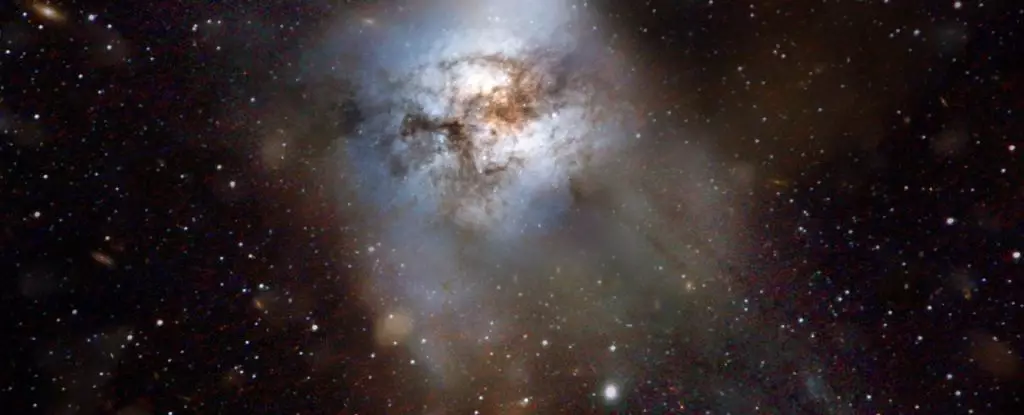The early Universe was a turbulent and dynamic era. In the aftermath of the Big Bang, star formation surged while galaxies emerged from the darkness, colliding and growing. However, interpreting the light that has traveled across vast distances and time poses a challenge, leading to occasional misinterpretations. Such is the case with the intriguing object known as HFLS3, which has recently been reevaluated by the most powerful space telescope in operation, the James Webb Space Telescope.
Previous observations of HFLS3, discovered in 2013, led scientists to believe that it was a single galaxy experiencing vigorous star formation a mere 880 million years after the Big Bang. This galaxy seemed to defy expectations, producing stars at an astonishing rate of 3,000 solar masses per year. In comparison, our own Milky Way galaxy only produces around 8 solar masses of stars annually. These perplexing findings challenged current understanding of galaxy formation and star production in the early Universe.
A Closer Look at HFLS3
To gain deeper insights into HFLS3, a team of astrophysicists led by Gareth Jones from the University of Oxford turned to the James Webb Space Telescope (JWST). Equipped with the near-infrared NIRSpec instrument, JWST provided a higher resolution and more detailed view of the object. In September 2022, the team conducted observations of the patch of sky where HFLS3 resides and meticulously analyzed the data.
The analysis revealed a surprising revelation – HFLS3 is not a single galaxy but instead consists of six galaxies engaged in an enormous collision at the dawn of time. Within a relatively small volume of space, only 36,000 light-years in diameter, three pairs of small galaxies were found locked in a gravitational dance, hurtling towards an inevitable collision. This collision would have taken place within a billion years of the observation, a remarkably short period for such a monumental event.
The close proximity of these galaxies results in intense gravitational interactions that stir up their star-forming material. This turbulence ignites star formation at an extraordinary rate, explaining the previously perplexing high star production observed in HFLS3. This newfound understanding offers a unique glimpse into the way galaxies interacted and grew during a pivotal period known as the Cosmic Dawn.
A Paradigm Shift in Interpretation
The discovery of the true nature of HFLS3 has far-reaching implications, requiring a reinterpretation of the field’s understanding. Rather than an extreme starburst, HFLS3 represents one of the densest clusters of interacting star-forming galaxies within the first billion years of the Universe. It challenges previous assumptions about galaxy growth and star formation in the early Universe.
Given the profound implications of this discovery, the researchers emphasize the need for further investigation and closer examination of this and other sources. The intricate interplay between galaxies and the mechanisms driving their evolution during the Cosmic Dawn is a topic deserving of thorough exploration.
The case of HFLS3 serves as a vivid reminder of the complexities involved in studying and understanding the early Universe. The remarkable findings from the James Webb Space Telescope shed new light on this enigmatic object, revealing it to be a colossal collision of six galaxies rather than a single galaxy undergoing extreme star formation. This discovery challenges existing notions and opens the door to a deeper exploration of galactic interactions during the Cosmic Dawn. The mysteries of the Universe continue to unravel, highlighting the need for continued scientific investigation and the relentless pursuit of knowledge.


Leave a Reply